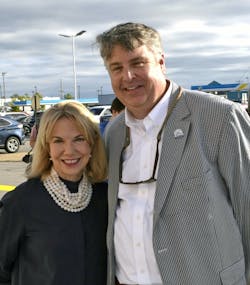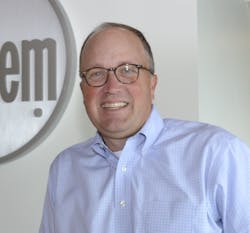What's New, What's Next? Supporting HVACR Contractors in a Time of Great Change
EXCLUSIVE TO CONTRACTING BUSINESS
This month we begin a special section for 2024 -- What's New, What's Next? -- in response to the range and intensity of current developments in the heating, air conditioing, ventilation and refrigeration industries. We are asking select HVACR equipment manufacturers to provide commentary on their roles in helping contractors through the myriad changes now at work in HVACR. - ed.
In 2025, the Environmental Protection Agency (EPA) will set a maximum global warming potential (GWP) limit of 700 for air conditioning. This means lower GWP refrigerants with an A2L ASHRAE classification, will replace the once-standard R-410A equipment. With just under a year left until these industry-wide changes take effect, HVAC manufacturers are working diligently to develop products and provide training for their customers, but many are confident that contractors are more prepared than they may think.
Although the emphasis on preparedness as it relates to A2L is often placed on contractors, much of the responsibility for ensuring the industry is well-equipped lies on the shoulders of manufacturers. While A2L refrigerants requires updates to standards and building codes to allow for safe installation, the good news is that the updates are completed, and most contractors will not see any changes in their day-to-day work. Despite being regulated by the EPA, contractors will not require additional certifications to work with A2Ls. Those who already hold an EPA Section 608 certification will be grandfathered in – no exam necessary. Manufacturers, however, are responsible for developing products that meet new efficiency standards, closely monitoring state regulations, and training customers to safely use and install products.
Contractors may still feel hesitant about working with A2Ls, but this sentiment is often a result of misinformation about the flammability of these refrigerants. Although A2Ls are classified as mildly flammable by ASHRAE, they have a lower flammability rating compared to A3 refrigerants such as hydrocarbons, propane, and isobutane. They also have a lower toxicity rating than B series refrigerants such as ammonia. In fact, A2L refrigerants are considered the second safest class of refrigerants. It is extremely important that A2L refrigerants are only used in equipment designed for A2L refrigerants. They cannot be used in existing A1 systems under any circumstance. Fortunately, manufacturers have been hard at work developing products contractors will need to meet new efficiency standards.
At Rheem®, we actively engage regulators, code officials and standards organizations to ensure safety and predictability in the market. We also made significant investments, launching all new products in 2023 to better prepare our product line for new regulations and new technology. These advanced technology improvements include our ENERGY STAR® certified (up to 20 SEER2 / 12.5 EER2 / 8.5 HSPF2) Endeavor™ Line Prestige® Series iM Heat Pump (RP18AZ), which offers one of the highest efficiencies available today. Additionally, the unit qualifies for substantial tax credits and rebates (i.e., IRA Energy Efficient Home Improvement {25C} Tax Credit and High Efficiency Electric Home Rebate Program).
In preparation for Rheem’s launch of A2L-compliant products in 2024, Rheem is leading the training of contractors and distributors to help manage the transition with live and virtual sessions on A2L refrigerants and the products that use them.
As we approach a future marked by decarbonization, we are optimistic about the resiliency of the industry adapting to regulations, while embracing innovations that lead us toward a more sustainable HVAC landscape. With advancements in technology and more awareness of sustainable products and practices, it’s becoming easier for homeowners and businesses to be environmentally proactive. As our industry works toward the next wave of change, it is truly inspiring to see the entire channel, including distributors, contractors and manufacturers working together to ensure we are all equipped to make this transition as smooth as possible.
Karen Meyers is vice president, government affairs and Randy Roberts is vice president, residential business at Rheem.



